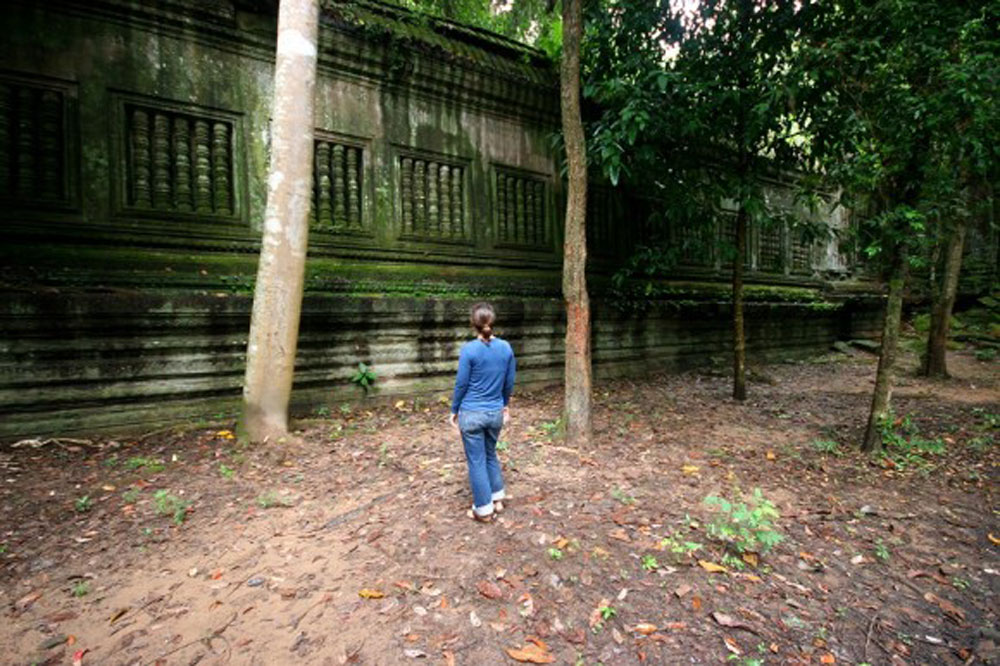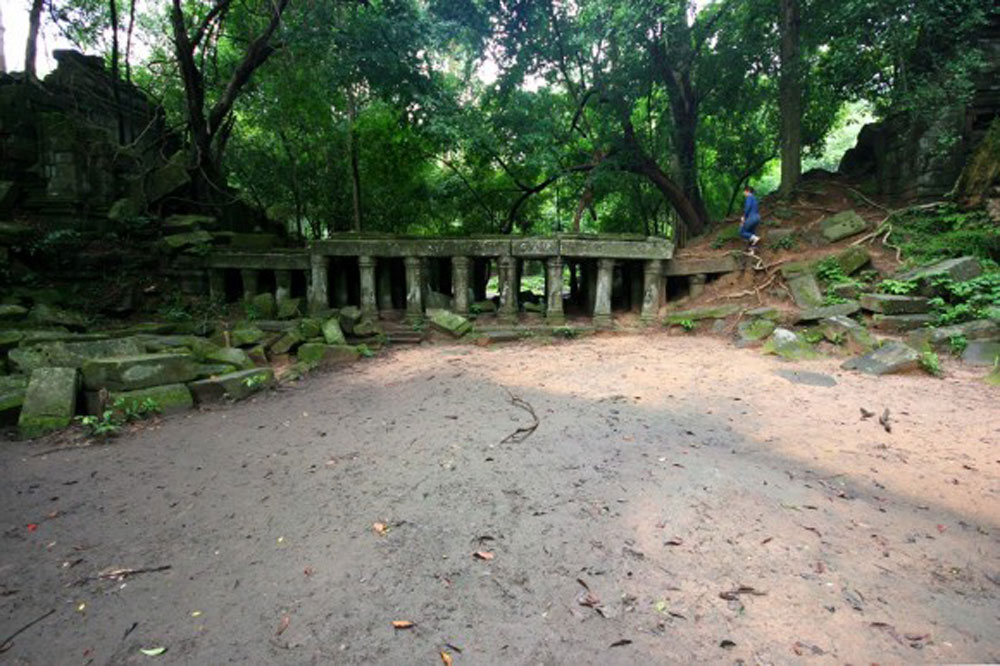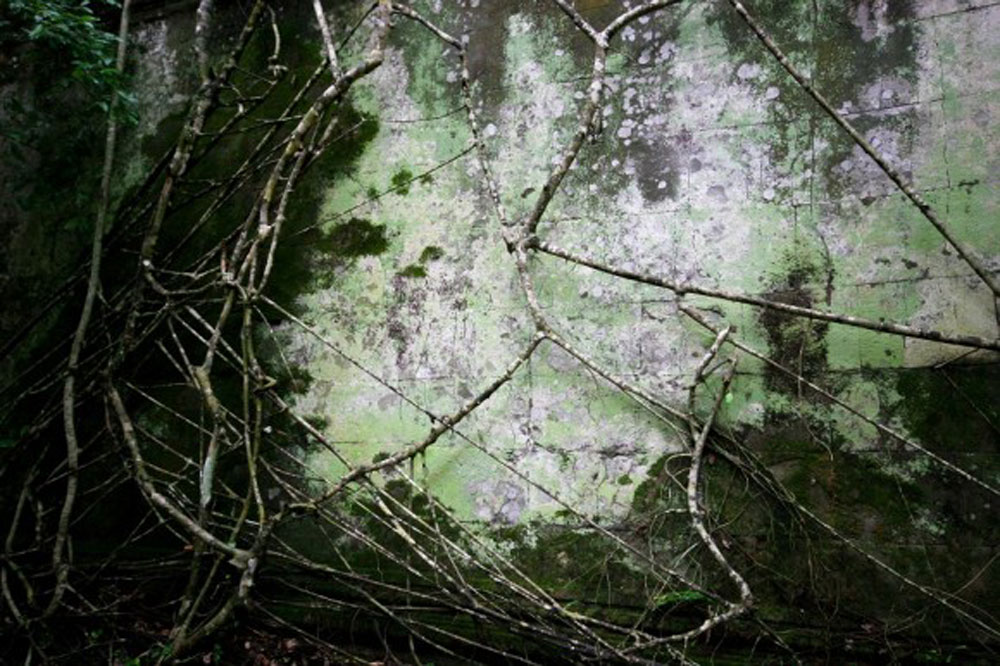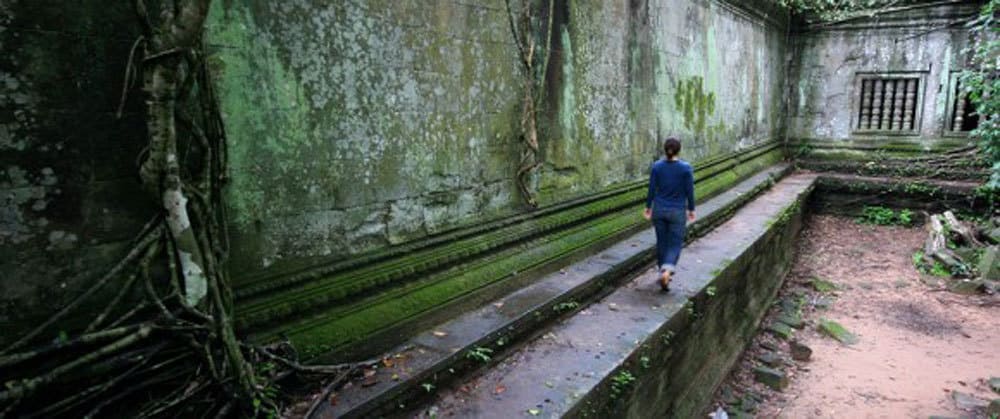In Cambodia’s west-central jungles lie the ruins of an ancient Khmer kingdom, at the center of which sits the impressive site of Angkor Wat. There are innumerable ruins of palaces, temples, and royal buildings immediately surrounding Angkor Wat, but it was an outpost an hour off to the northeast that initially caught our attention. We had heard stories of ruins still covered by dense overgrowth; a look into what the ruins would have looked like before their uncovering by archaeologists; a place to be discovered by the rays of sunlight seeping through dense vines that hang from centuries old strangler fig trees.
As the road signs indicated Siem Reap 30 miles ahead, we turned Nacho onto a tiny side road that wound through rice paddies and villages toward the North. Soon the villages dissipated and the countryside became a patchwork of jungle and rice fields. And then we arrived at Beng Mealea.
It was late in the afternoon and a lone bus carrying some of the more adventurous tourists departed just as we arrived, and then we had the whole place to ourselves. We found a spot right next to the highly decorated stone promenade leading to the entrance of the complex, and declared a camp site for ourselves.
Given the limited time before sunset, we decided to wait until the morning to explore the ruins. Instead, we locked our doors and walked farther into the jungle on the muddy dirt road on which we’d arrived. The road wound its way into the jungle, past rice paddies and a few stick huts, before splitting. At the fork in the road we noticed a trail heading into the jungle. We had been warned that thousands of unexploded land mines still littered this jungle, but we figured that if we stayed on a worn footpath then we’d probably be safe. We entered the dark undergrowth.
The trail wound its way through the trees for a while, and soon we noticed some half-buried hand carved stone work protruding from the jungle floor. As we walked on through the dense foliage more and more stone carvings were noticeable under cover of vines and half buried in the mud. Suddenly the trail hooked to the left and we found ourselves on an unexcavated stone thoroughfare of some kind, lined on both sides by intricate carved statues of seven-headed snake creatures, ferns, and round columns.
We felt what it must have been like for the first discoverers of this site, to be walking in the jungle and to come upon fragments of an ancient civilization. Our minds flashed back to our accidental discovery near Tikal in Northern Guatemala.
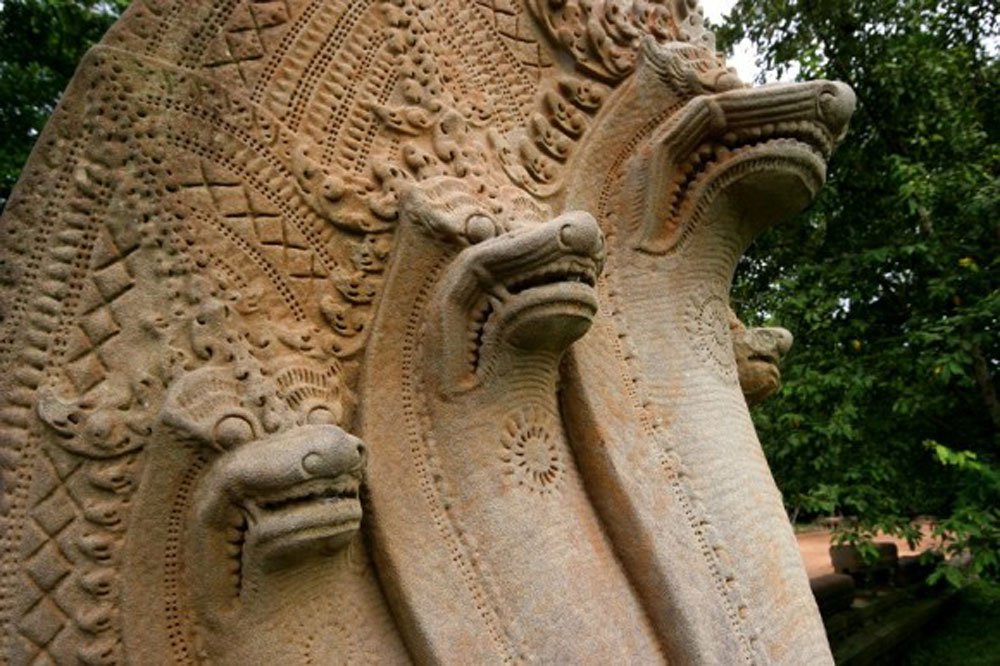
We followed the thoroughfare farther and its condition continued to improve until through the trees we could see an enormous stone wall, partially toppled by the swollen root of a strangler fig. We’d accidentally found our way to an ancient road used to access the complex of Beng Mealea.
We carried on and in the evening’s fading light found ourselves alone in the crumbling ruins, walking through walls decorated by intricate carvings, enormous arches adorned with snakes and elephants and script, and stepping over enormous stone blocks dislodged by roots and toppled onto the jungle floor. After a brief survey of the complex we made our way around to the main entrance and found our way back to Nacho for the night.

In the morning we awoke early. We wanted to be inside of the complex when the first rays of sunlight permeated the jungle canopy and cast columns of light on the ruined walls. At 5:30 we walked down the stone promenade toward the ruins, wiping the sleep from our eyes. Soon we were joined in stride by a small disheveled girl and her disheveled friend.
“One dolla chia?”
She was so cute and tiny, and spoke in such a funny little chipmunk voice. She stared up at us and put her hand out, and then repeated herself.
“One dolla chia?”
“Hi there little lady. You sure are cute!”
“One dolla chia?”
Her tiny mouth formed into the shape of an upside down horseshoe and she made her voice crack as though she were about to cry.
“One-dolla…chia?” she repeated, dragging the last word out for drama and following it up with a sniffle. It became clear that someone—probably her parents—had taught her how to ask foreigners for money. She had taken “one dollar each,” and without a basis for the English language had transposed the sounds to “one dolla chia,” which sounds extremely cute when coming from the mouth of a tiny Cambodian chipmunk girl.
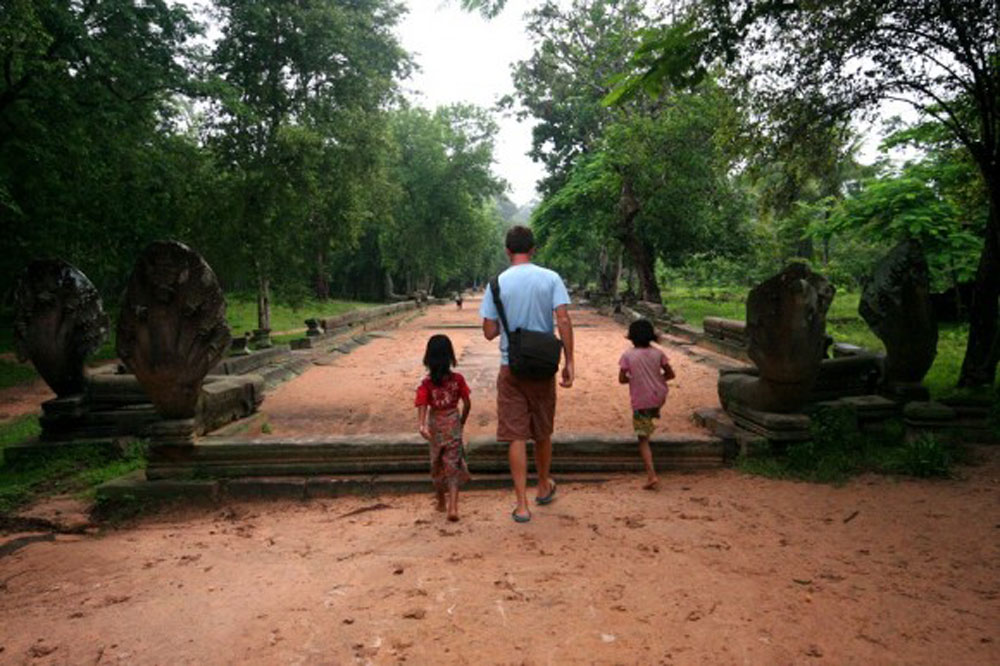
But when it comes to giving away free money to perfectly able-bodied beggars, regardless of body mass, age, gender, or voice pitch, I am heartless and cutthroat.
“One dolla chia? Are you crazy!?”
“(sniff)…One… (whimper)…dolla chia? (whimper, sniff)”
“If I gave you one dolla chia, and then gave one dolla chia to every kid who asked, I would very quickly run out of money. Don’t your parents feed you?”
“One dolla chia?”
“You go back to your parents and tell them that they should feel ashamed of themselves for sending you out here to beg. You should be in school.”
The girl continued to follow us around for ten or fifteen more minutes as we entered the ruins and crawled over the giant carved blocks that were strewn about. Finally she gave up and disappeared.
A few minutes later tiny children began appearing on top of the tall walls of the ruins. They walked about with ease, oblivious to the deadly drops to either side, and they jumped from stone to stone over deep crevasses and over vines. They wore no shoes, and were as agile as monkeys. They were the children of the nearby stick huts, and rather than go to school they roamed around the ancient ruins in packs.
Sheena and I walked along an elevated stone walkway midway up one of the enormous walls, and as we did the pack of children approached from the opposite direction. They marched toward us in single file, and as they reached us they flung themselves like lemmings, one by one, off of the wall to the hard ground below. One-Dolla-Chia was the last one in the pack, and before flinging herself off of the wall she glared deep into my eyes and gave me a colossal stink eye.
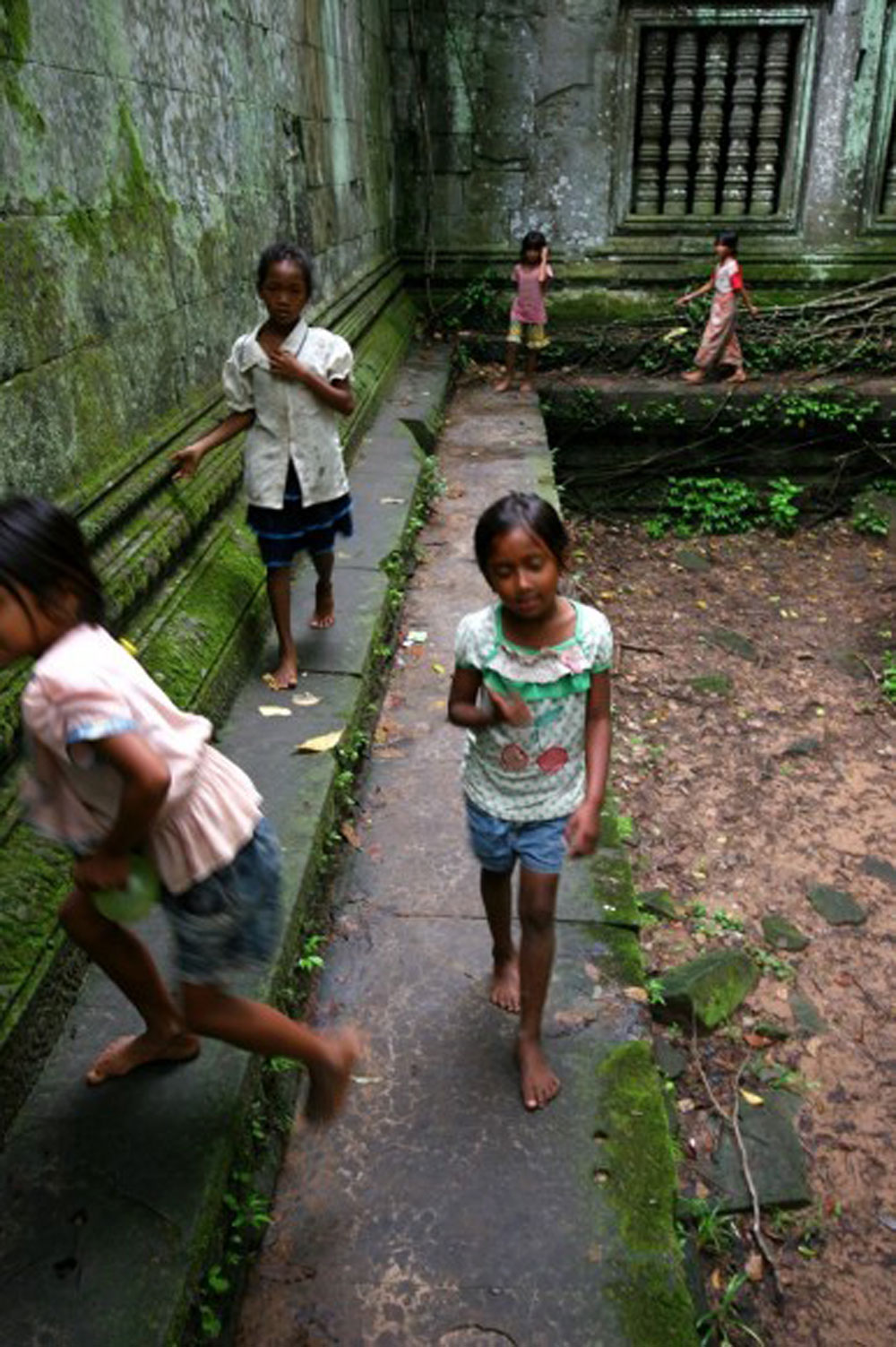
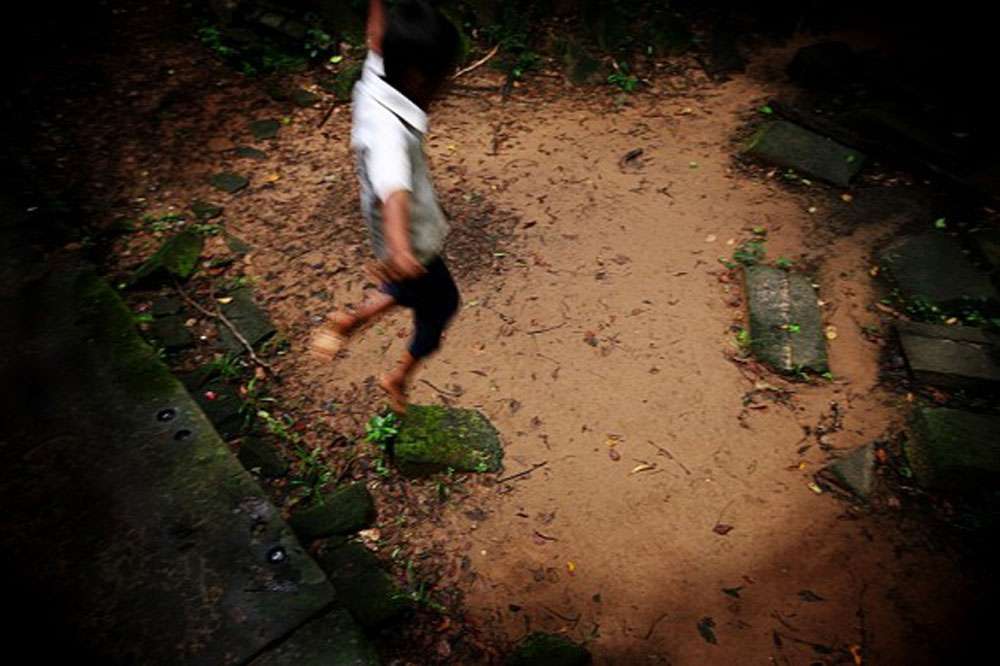

The ruins were spectacular, like something that time forgot. The complex was surrounded by a high and thick protective wall, and inside there was a vast collection of rooms, covered hallways, an underground corridor, and various walls covered in elaborate inscriptions. The open spaces were filled with giant trees, and many of the structures were topped by giant strangler figs, named for their creeping roots that seem to strangle the ruins below them, and whose roots grow through the walls and then swell up over time, causing entire walls and columns to topple.
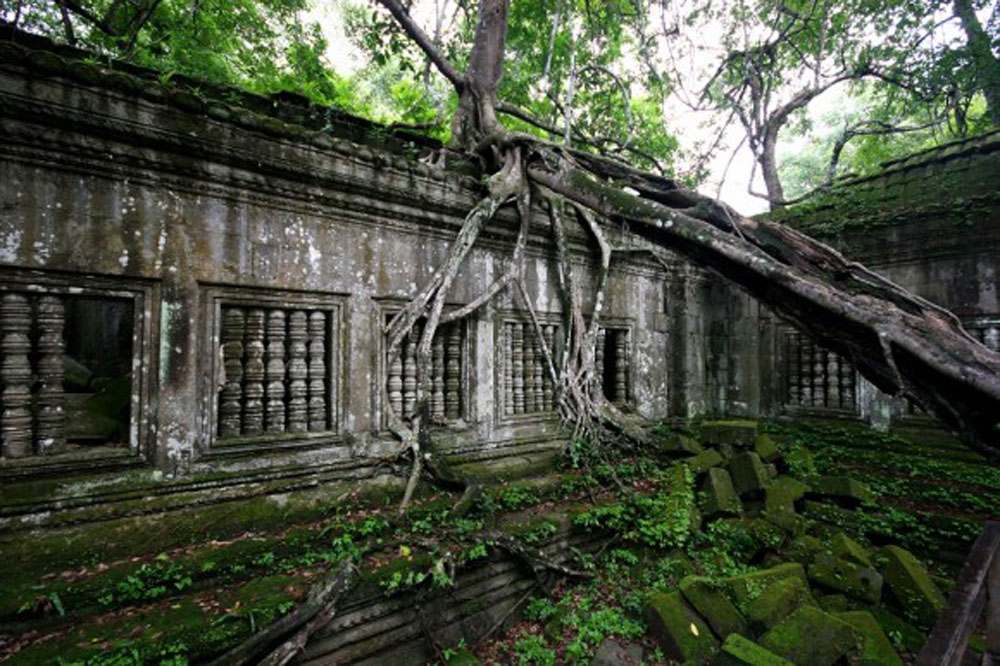
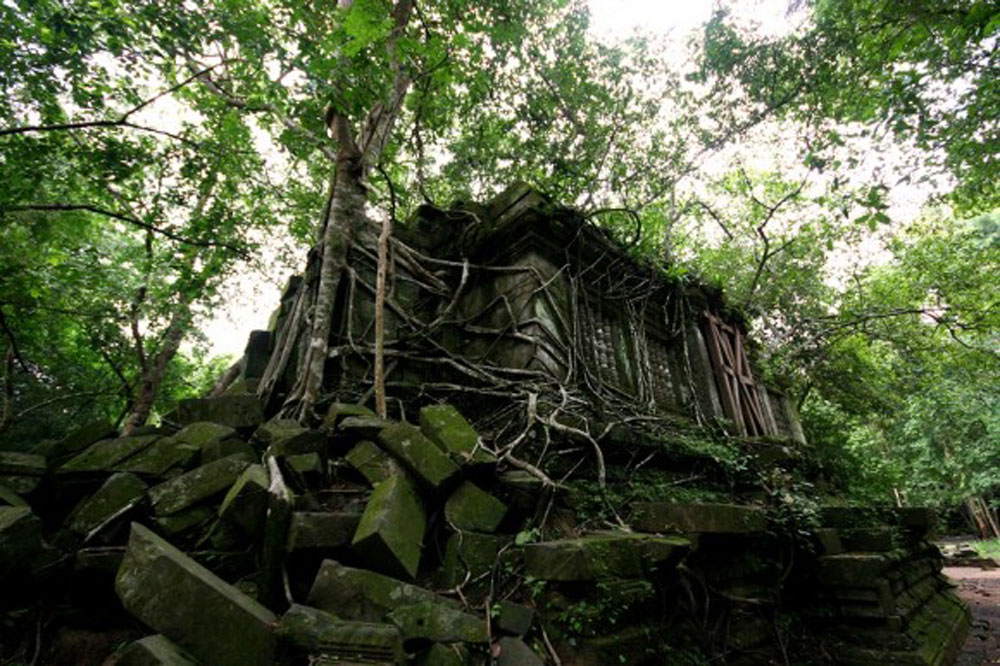
By 9:00 in the morning we had explored the entire complex; we had been there for the first rays of light seeping through the canopy, and in the absence of other people we had seen the place much in the same condition as it was discovered.
On the walkway heading out of the complex toward Nacho, we passed by the first group of tourists for the day. And out of the woodwork came One Dolla Chia.


